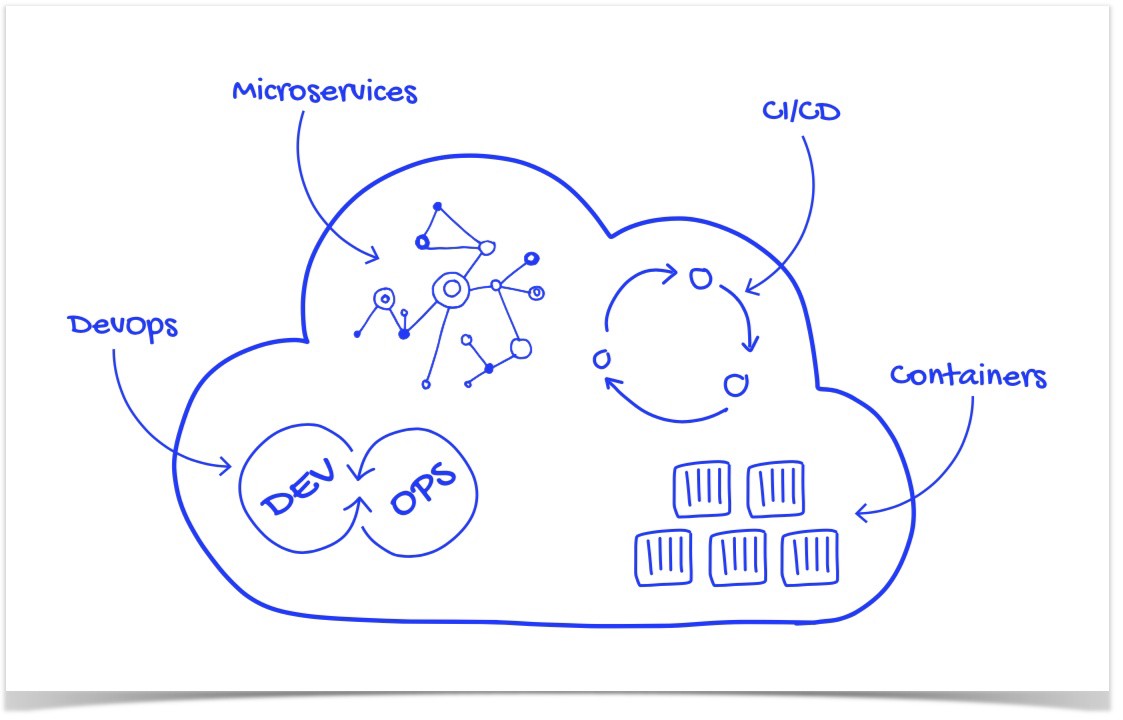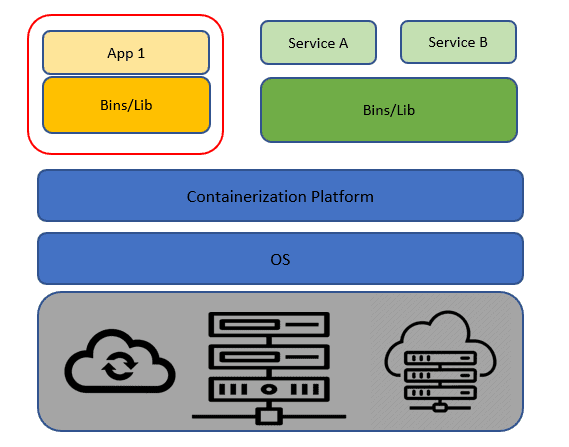Cloud-native ecosystem is a novel term for many but for people associated with the IT industry, it is a term which enables businesses to build applications in any type of cloud like public, private or hybrid. In this blog, we wish to discuss the definition of Cloud native, how the Cloud native application architecture is made up, the benefits to be realized and challenges which businesses need to consider. So, let’s begin with Cloud native.
What is Cloud-Native?
Before we proceed, it is important to understand the true meaning of Cloud native and what is included in this approach along with steps for organizations. It is an innovative application development solution using microservices and APIs which is build on the cloud computing model. Here, it is not important where these applications are deployed. The only point of concern in the cloud native application architecture design pattern and development of applications.
Businesses can use this innovative approach to develop and run applications in a public, private or hybrid cloud environment. Now, these apps are not build using modules but are designed from scratch and are specially developed to scale as and when required. The aim of this approach to build scalable applications by reducing the time and cost. Building an agile system which can be scaled is a dream for any organization and Cloud native provides this approach of transformation.
In the recent times, businesses have increased their scope and complexity in order to provide more benefits to the end user. The end users too, are looking for something more from the business which was not the case in the past. Hence, it becomes extremely essential for businesses to take the Cloud native approach to offer change, scalability and agility at a fraction of the total cost.
What is Cloud Native Architecture?

Oracle cloud native is a principle which aims at reducing business complexity and enabling strategic app development using a plethora of services like EC2 or S3. These are agile development strategies that are different than conventional application development.
The agile nature of this strategy is made possible due to the use of microservices and containerization. By using these services, the users will not face any serious downtime and can continue their development process in a seamless manner. It is extremely important to introduce this concept as the development team may develop different components and the system must not face any downtime or stability.
What are the benefits of cloud native?
This strategy is apt for businesses that take an agile approach to development which is a new way of achieving scalability at reduced cost. There are various benefits, including but not limited to the following:
- Try to use loosely connected services depending on your system/project requirement.
- Single cloud service provider offers more benefits if microservices are concerned.
- Important to use simple methods for development and debugging.
- Enhancing user experience by using microservices optimally.
- Reducing the development time is important and microservices can help with that.
- Resource allocation and utilization is a must for maximum efficiency.
- No need to change the development principles if microservices can be leveraged for app design and development.
What are the Challenges to consider?
Even though there are multiple advantages of cloud native architecture, using microservices with OCI is not the best bet for all businesses. Some of the challenges that can pose a risk are outlined below:
- Internal teams can face a development issue by using microservices.
- Security issues may be a concern if containers are not managed properly.
- Migrating an app is a challenge without impacting its core features.
- Microservices would require a complex setup including a definite OS, instance and more.
You may also like: Top 10 SaaS Trends for 2022
What are Cloud Native Tools?
Businesses using the full Cloud-native toolkit can get access to full suite of tools for development at low cost. Now, what are these cloud native tools? Let’s find out.
Microservices

The whole idea of using microservices is to create different segments and connect them internally. At no point, we would be developing a conventional application using microservices. Different modules cater to different business goals and creates an excellent interface to interact internally. Additionally, there is a different database for each microservice too. This is important if you want to leverage microservices to its full potential.
Continuous Integration/ Development
CI/CD is a special component for infrastructure that allows quick test execution for major events including merges and push/pull requests. More often than not, businesses leverage CI/CD for quality testing, privacy and security. It is a crucial part of the Cloud native architecture as it may lead to human errors.
Containers

Containers include a logical box that comes with essential things needed to run the app smoothly. It comes with the OS, app code, APIs, different tools and libraries. These containers usually run in the host machine and do not need a Hypervisor for independent functioning. Essentially, the size of containers is much smaller than VM and hence it is quick to start and implement different containers simultaneously.
Container Orchestration

This type of orchestration is required to manage, schedule, scale and store containers. It is possible to use these simultaneously along with containers. By using orchestration, you can run and deploy the application on different environments without the requirement to redesign it. One of the most widely used orchestration tool is Kubernetes.
Logging
Logging is a crucial aspect of observability and is always accessible to teams so it is best to use it accordingly. Logs are essential for any system and it is used to understand and analyze the ongoing situation in any system but it can be expensive. A cost effective solution is to use time series. So, depending on the requirement and usage you can choose the best option for your project.
Final Word
Now, as you have read and understood the benefits and challenges associated with Cloud native architecture, you can make an informed decision. If you are transitioning to Cloud-native architecture, it is important to choose a cost effective solution which can help you enhance your business operations in a timely manner. What do you think about Cloud Native architecture? Is your business ready to jump onto the cloud-native bandwagon? Let us know what you think in the comments section below or get in touch with us [email protected] today to learn more.

